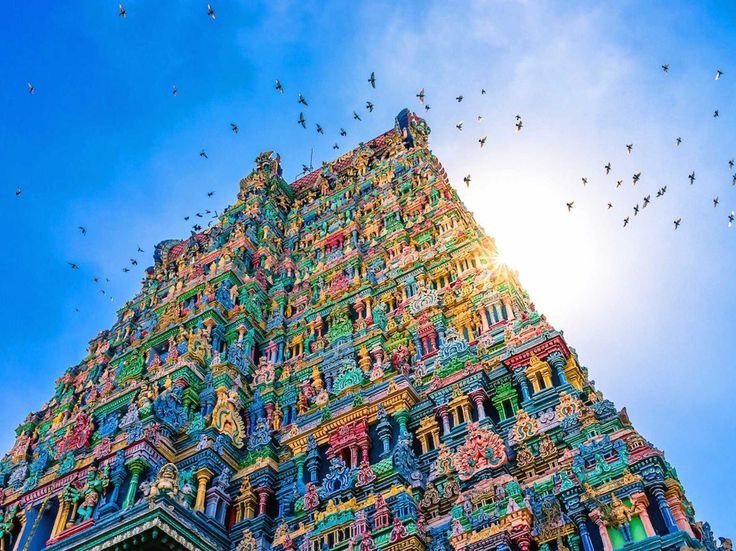Top 10 Temples in India
Vaishno Devi Temple, Jammu and Kashmir – This cave temple dedicated to Hindu goddess Vaishno Devi is one of the most visited temples in India. It requires a 12 km trek to reach the temple.
- Location – Situated in Katra town in Jammu and Kashmir’s Reasi district. Nestled in the Trikuta mountains at an altitude of 5,200 feet.
- Deity – The temple is dedicated to Maa Vaishno Devi, an incarnation of Hindu goddess Laxmi.
- Architecture – The temple cave is along a 12 km uphill trek from Katra. The main cave temple houses three rock-cut idols of goddesses Mahakali, Mahalakshmi and Mahasaraswati.
- Popularity – Vaishno Devi is one of the most visited religious shrines in India, with over 10 million devotees visiting every year.
- Pilgrimage – The pilgrimage requires a 12 km uphill trek from Katra on foot. Ponies, dolis and palanquins are also available. The journey passes through beautiful forests and mountains.
- Bhawan – At the entrance of the cave is the Bhawan complex which has amenities like cloakrooms, showers, lockers and meal facilities for devotees.
- Aarti – The evening aarti is a popular ritual with chanting, bells and the offering of lamps to the deity.
- Significance – The temple is an important Shaktipeeth dedicated to Shakti or the Mother Goddess. It is believed that Vaishno Devi grants the wishes of her devotees who come seeking her blessings.
- History – The temple cave and shrine are believed to be over 700 years old. Several legends are associated with the discovery of Vaishno Devi’s pindis in the cave.
- Festival – Navaratri sees the most number of pilgrims. The cave temple remains open throughout the year.
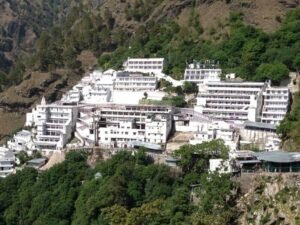
Tirumala Venkateswara Temple – This Vaishnavite temple is located on Venkatadri hill on Tirumala, Andhra Pradesh. It is renowned for its immense wealth donated by devotees and intricate stone carvings depicting Lord Vishnu’s avatars.
- Location – Situated in Tirumala, Andhra Pradesh. It is built on the Venkatadri hill, one of the seven hills of Tirumala.
- Deity – The temple is dedicated to Lord Venkateswara, an incarnation of Hindu god Vishnu. Also known as Balaji, Govinda and Srinivasa.
- Architecture – The temple has a main gopuram built in Dravidian style. The temple complex covers an area of over 23 acres with multiple shrines, mandapams, towers and water tanks.
- Popularity – Tirumala temple is the richest and most visited place of worship in the world with over 50 million devotees visiting annually.
- Wealth – The temple receives millions in donations every year. The temple assets and gold reserves are estimated to be worth over $20 billion.
- Darshan – Daily rituals include Suprabhatam, Tomala Seva, Archana, Kalyanotsavam and Dolotsavam. Special darshan tickets can be booked online in advance.
- Prasadam – The world famous Tirupati laddu prasadam is given to every pilgrim visiting the temple. Over 150,000 laddus are distributed daily.
- Hair tonsuring – Many devotees get their heads tonsured as an offering to Lord Venkateswara. Around 600 barbers work daily shaving over 10,000 heads.
- Festival – The annual Brahmotsavam festival sees the temple chariot processions and draws the maximum pilgrims.
- History – The temple origins date back to 300 AD. The main temple was expanded in the 9th century by king Thondaiman.
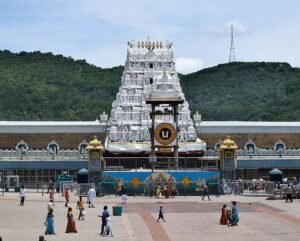
Golden Temple – Also known as Harmandir Sahib, this temple’s lower floors are made of marble while the upper floors are covered in gold foil. The temple serves over 100,000 free meals daily in the langar.
- Also known as: Harmandir Sahib or Sri Darbar Sahib
- Location: Amritsar, Punjab
- Significance: Holiest shrine in Sikhism
- Architecture: Four-storied structure with gilded gold dome and decorated marble lower levels
- Water body: Temple is built in the middle of the ‘Sarovar’ – a large lake fed by the Ravi river
- Main shrine: Central shrine houses the Adi Granth, the holy scripture of Sikhism
- Community kitchen: Feeds over 100,000 people daily for free in the langar hall
- History: Founded in 1574 by the fourth Sikh guru, Guru Ram Das. Rebuilt in the early 19th century by Maharaja Ranjit Singh
- Golden exterior: Upper floors and dome are covered in 750 kg of pure gold foil donated by Maharaja Ranjit Singh
- Marble decor: Lower levels are decorated with intricate marble carvings inlaid with precious stones
- Four entrances: Denoting openness and acceptance of all religions and castes
- Nightly rituals: Closing prayers take place every night with Gurbani Kirtan followed by the carrying of the Adi Granth in a palanquin to the Akal Takht
- Most visited: Receives over 50,000 visitors daily making it one of the most visited holy shrines worldwide
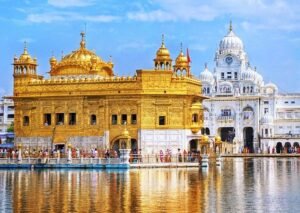
Meenakshi Amman Temple – This historic temple features high painted gopurams covered in bright colorful sculptures of Hindu gods. The temple complex is huge with over 30,000 sculptures.
- Dedicated to: Goddess Meenakshi, a form of Parvati, and her consort Lord Sundareshwar, a form of Shiva
- Architecture: Dravidian style temple with 14 gateway towers (Gopurams), the tallest being 170 ft high
- Sculptures: Elaborately carved sculptures of various Hindu gods, goddesses, animals and mythical figures
- Status: One of the most ancient and largest temple complexes in India
- Temple tanks: Temple has two major tanks – Potramarai tank and the Golder Lotus tank
- Halls: Sprawling complex housing many halls like the Thousand Pillar Hall with carved pillars
- Temple tower: Southern gopuram is the second tallest temple tower in India standing at 161 ft
- Wedding ceremony: Sculptures depict the wedding between Goddess Meenakshi and Lord Sundareshwar
- Float festival: The temple hosts the popular annual Meenakshi Tirukalyanam float festival
- Evening ritual: Every evening the statue of Lord Sundareshwar is taken to Meenakshi’s chamber through the streets
- History: Origins date back to 6th century CE. Destroyed by Muslim invaders and rebuilt in 16th and 18th century
- Visitors: Sees over 15,000 visitors daily. Around 1 million during the 10 day Meenakshi Tirukalyanam festival
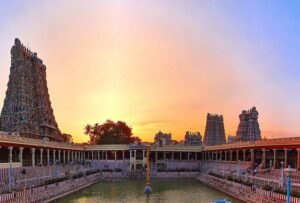
Kedarnath Temple – Sitting at an elevation of 11,755 ft near Chorabari Glacier, this temple can only be reached by a steep uphill trek. The scenic hike passes through alpine forests.
- Location – Situated in the Garhwal Himalayan range near the Mandakini river in Uttarakhand
- Deity – Dedicated to Lord Shiva, houses one of the 12 Jyotirlingas
- Significance – Part of the sacred Char Dham pilgrimage and Panch Kedars
- Architecture – Built in 8th century AD, in hybrid Kathmandu and South Indian style
- Trek to Reach – Requires 14 km uphill trek from Gaurikund. Ponies and palanquins are available for the journey.
- Elevation – Located at an altitude of 3,583 m (11,755 ft) making it among highest Shiva temples
- Main Shrine – Houses the conical aniconic Jyotirlinga which is worshipped as Lord Shiva’s manifestation
- Halls – Temple complex consists of the main Garbhagriha, Sabah Mandap and Bhairav Mandap
- Destruction – Destroyed in 2013 floods, later reconstructed. Original construction dates back to Adi Shankaracharya period.
- Pilgrimage Season – Temple is closed in winters due to extreme weather. Open from April/May to October for pilgrims.
- Festivals – Large pilgrim turnouts during festivals like Maha Shivratri and annual default ceremony.
- Trek Difficulty – Steep climb at high altitude with certain sections having steps. Mules and porters are available for assistance. Oxygen scarcity can be an issue for some pilgrims.
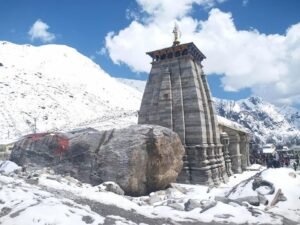
Konark Sun Temple – Built in the 13th century CE, this temple features exquisite stone carvings of celestial dancers, wheels, gods and symbols. Its architecture gives it a chariot-like appearance.
- Location – Konark, Odisha on the shores of the Bay of Bengal
- Dedicated to – The Sun God Surya
- Architecture – Built in 13th century CE in the shape of a giant chariot with immense stone wheels and sculptures of horses pulling it.
- Style – Outstanding example of Odishan temple architecture and Kalinga style
- Main temple – Fell into ruins, only the mandapa (porch) exists now with parts of the shikhara (spire)
- Sculptures – Elaborately carved with images of warriors, musicians, celestial dancers, floral motifs. Depicts scenes from courtly life and Hindu mythologies.
- Wheels – Massive stone wheels over 10 feet in diameter. Seven horse sculptures are shown pulling the temple chariot.
- UNESCO site – Included in the UNESCO World Heritage Sites list for its architectural brilliance.
- Collapse theories – Possibly collapsed under its own weight or due to invasions and lack of care.
- Management – Maintained by the Archaeological Survey of India (ASI) and follows regulated entry and visit timings.
- Festival – Hosts the popular Konark Dance Festival on its premises showcasing traditional and classical Indian dance forms.
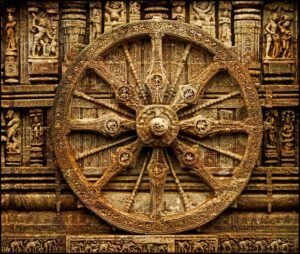
Jagannath Temple – Famous for the annual Rath Yatra festival, this temple has idols of Jagannath, Balabhadra and Subhadra carved from sacred Neem logs. Non-Hindus cannot enter the main temple.
- Dedicated to: Lord Jagannath, a form of Krishna, along with Balabhadra and Subhadra
- Architecture: 214 feet high with pyramidal structure comprised of over 120 temples and monuments
- Jagamohan: The porch in front of the main shrine with intricate carvings
- Boundary Wall: Encompasses area of over 400,000 square feet
- Idols: Made of wood and reconstructed every 12 years as the wood deteriorates
- Rath Yatra: Famed annual chariot festival attracting over 1 million devotees
- Offers Free food: Over 50,000 people fed daily in the temple kitchen or Ananda Bazar
- No Entry: Only Hindus allowed inside, others can view from the roof or get ‘darshan’ through a special window
- Construction: Built in 11th century by King Anantavarman Chodaganga Dev. Rebuilt multiple times.
- Heavenly Abode: Puri is considered the earthly abode of Jagannath while the temple signifies his heavenly abode
- One of Char Dham: Part of the four sacred pilgrimage sites for Hindus along with Rameswaram, Dwarka and Badrinath
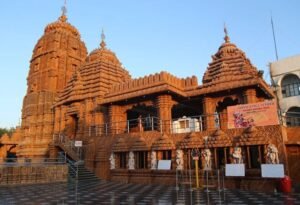
Kashi Vishwanath Temple – The temple complex has over 40 shrines, the holiest being the gold-plated Vishwanath shrine dedicated to Lord Shiva. It sits on the western banks of the Ganges.
- Location: Varanasi, on the western banks of the Ganges river
- Dedicated to: Lord Shiva as Vishwanath or ‘Ruler of the Universe’
- Significance: One of the most revered Hindu temples and pilgrimage sites
- Architecture: Ancient temple rebuilt several times. Current structure built in 1780 by Maharani Ahilyabai Holkar.
- Shikhara: 15.5 meter high golden spire and 800 kg of gold plating on the domes
- Shiva Lingam: Main shrine houses the Jyotirlinga of Kashi Vishwanath
- Gyanvapi Mosque: Located adjacent to and controversy over origins since Aurangzeb’s rule
- Puja rituals: Takes place daily with 3 aartis. Somvara Aarti on Mondays draws huge crowds.
- Temple complex: Has over 30 other ancient shrines, idols and places of worship within premises.
- History: Destroyed and rebuilt many times since 11th century. Original temple dates back to ancient times.
- Visitors: Around 3000 devotees on weekdays and 50,000 on festivals like Mahashivratri.
- Official name: Shri Kashi Vishwanath Mandir
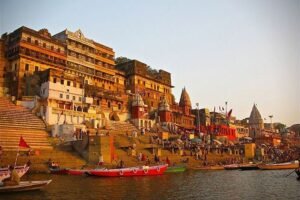
Somnath Temple: Having been destroyed and rebuilt 8 times, this temple was last rebuilt in 1951 CE. The arrow-shaped design was made keeping sea voyages in sight for sailors.
- Location – Prabhas Patan, Gujarat
- Dedicated to – Lord Shiva
- Significance – One of the 12 Jyotirlinga shrines of Shiva and part of Char Dham pilgrimage
- Architecture – Indian temple architecture style, arrow-shaped design
- Destroyed and Rebuilt – Estimated to have been destroyed and rebuilt 16 times starting early 11th century. Present temple built in 1951.
- Ruins – The ruins of the earlier temples can be seen around the current temple structure.
- Main Shrine – Houses the sacred Jyotirlinga on a silver platform in the garbhagriha
- Other Shrines – Smaller shrines dedicated to other deities like Shri Surya Mandir, Shri Hanuman Temple etc
- History – Believed to have been first built in 4th century CE by the Gujarat King Maharaja Somraja.
- Invasion Theories – Destroyed repeatedly by Muslim invaders like Mahmud Ghazni, Alauddin Khilji etc.
- Mahakali Temple – An adjacent temple built in the late 1950s enshrining Goddess Mahakali
- Beach Access – Somnath temple overlooks the Arabian Sea from the coast offering scenic views
- Light & Sound show – In the temple premises offering insights into history and the recurrent destructions.
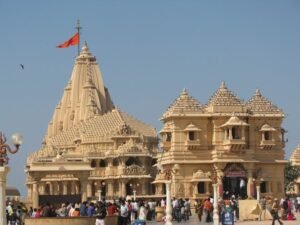
Kamakhya Temple– Sitting atop the Nilachal hill, this temple sees over 6 million devotees during the Ambubachi festival. It contains a natural spring that is considered the menstruation place of Goddess Kamakhya.
- Location – Atop Nilachal Hill in western part of Guwahati, Assam
- Deity – Goddess Kamakhya, one of the 51 Shakti Peethas
- Significance – Important Tantric temple associated with esoteric Shakti cults and Shaktism
- Architecture – Typical Koch style with beehive-like shikhara
- No Idol – Consists of a natural underground spring that flows through a yoni-shaped cleft in the bedrock
- Ambubachi Mela – Annual festival celebrating the menstrual cycle of Goddess Kamakhya
- Animal Sacrifices – Practice of bali (sacrifice) of animals like goats, buffaloes, birds is common
- Temple Complex – Comprises of several other shrines dedicated to 10 Mahavidyas and other Hindu gods
- Bhutan Gate – The main entrance gate reflecting Bhutanese architectural influences
- Mythology – Associated with mythology of Goddess Sati and the site where her yoni fell after destruction of Daksha’s sacrifice
- History – Origins likely before 5th century CE. Destroyed and rebuilt several times during Kamarupa rule and Ahom reign.
- Tantric Practices – Site of various Tantric and Aghori rituals and sadhana
- Managing Body – Controlled by Bordewri Committee under state government supervision.
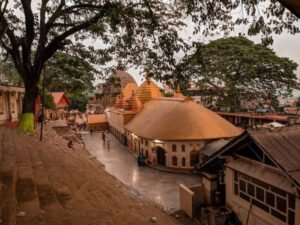
These ancient temples showcase the incredible diversity of Hindu architecture, sculpture and artistic brilliance across different Indian states and cultures. From the ornate Dravidian gopurams of Meenakshi Temple to the tranquil lakeside Harmandir Sahib, each temple has its own distinctive design and atmosphere.
